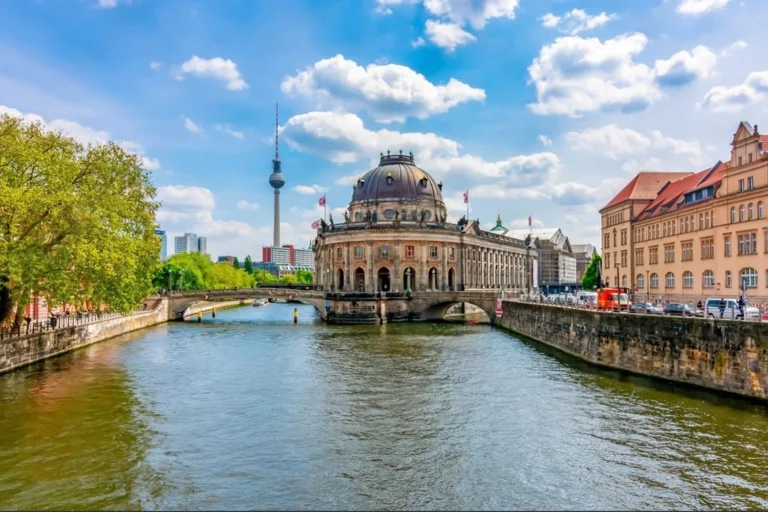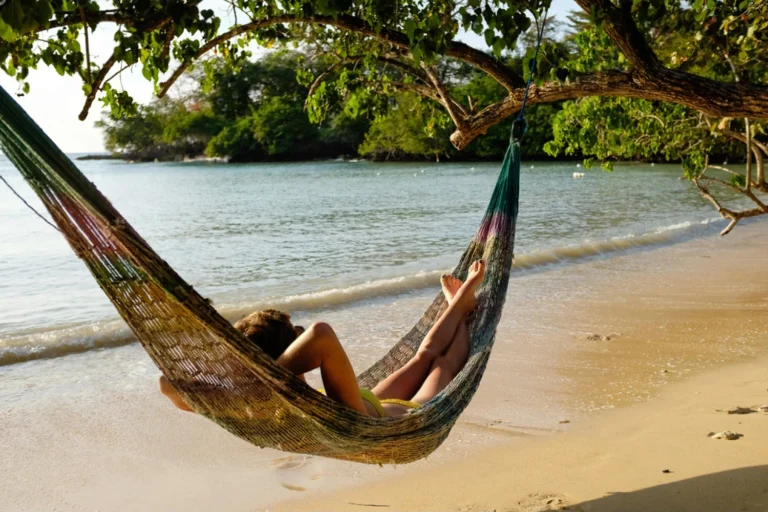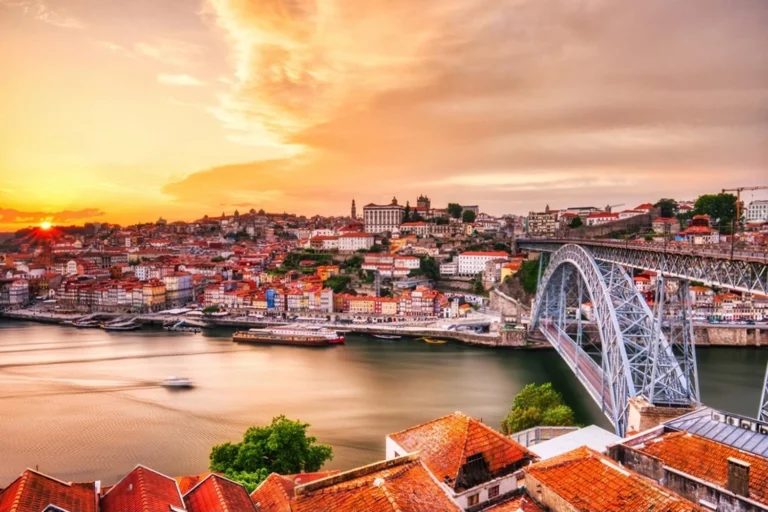Punta Cana: 30 Hidden Truths Beneath the Paradise Glow
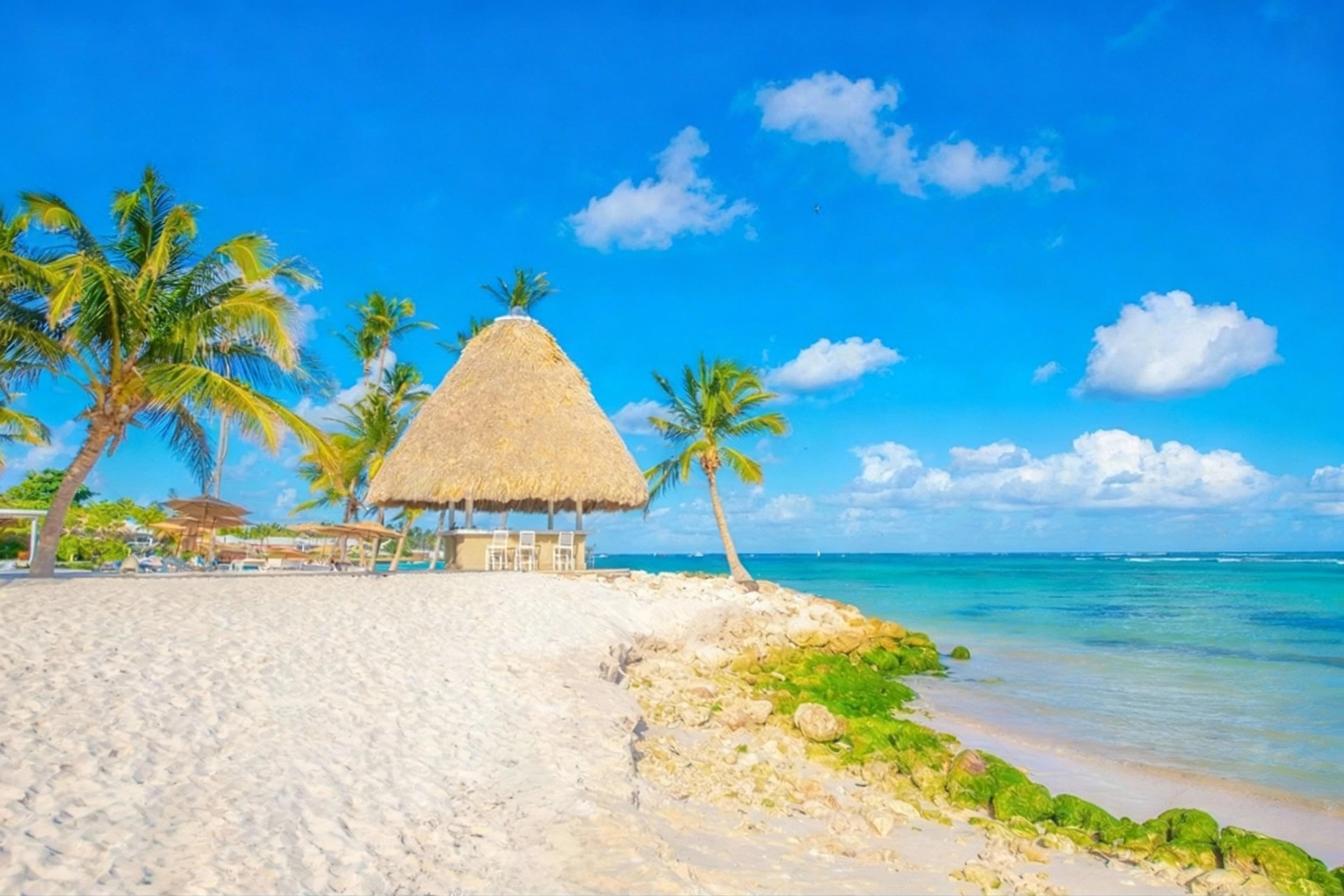
Which location should I write about so I can mention it once naturally?
From Jungle Trails to a Beachfront Beacon
Sometimes I laugh at how quickly paradise can feel inevitable. An older boatman told me his father came by rutted tracks through green so thick it swallowed the road, where loggers and fishermen lived on what they could pull from trees and tide. Less than sixty years ago, this coast was hushed and stubborn, the air resin sweet, the paths muddy and uncertain.
The first hotel, he said, was just one lone building with no electricity, only kerosene lamps trembling like small stars and the raw shoreline for company. Imagine that here in Punta Cana, a place that now gathers the world in sunlit ease, paradise arrived like a rumor, slowly, on foot. I love that beneath the polished edges you can still feel the older heartbeat the wind still roughens your hair the same way, the sea keeps its honest salt, and twilight reminds you how recently the dark belonged to oil and flame.

From Drunkard’s Point to White Palm Tip
I laughed when I learned its first name was Punta Borrachón Drunkard’s Point because honestly, you can still hear a little tipsy joy in the breeze at night. There’s the faint thrum of bachata, a sweetness of rum in the air, and the kind of laughter that keeps drifting along the shore. It suits the mischievous streak of a place that once leaned into its rowdy charm.
But the newer name feels like a quiet truth: in Punta Cana, “the Tip of the White Cane Palms” is a nod to those fan shaped fronds that once crowded the coast, still rustling like paper fans in a warm room. I remember standing at dusk, salt on my lips, and thinking how a name can tame a story without erasing it the revelry softens, the palms step forward, and the whole place exhales. The rebrand stuck because it fits: a shoreline that can throw a party, then tuck you into the glow of moonlight, steady as an outstretched hand.
Madmen, empty wilderness, and a mythic price of paradise
I still smile at that number – under $200,000 – drifting through the heat like a rumor. Back in 1969, Frank Rainieri and a New York attorney, Theodore Kheel, stood before scrub and sea grapes and a long, hush colored shoreline and said yes. Locals thought they were out of their minds, because all you could hear then was wind and birds, no hotels, no real roads, just open sky meeting open water. It was like buying a star before the night was fashionable.
Now, when the salt sweet breeze lifts the palms and the sea turns that impossible turquoise, I think about how belief can change the temperature of a place. Punta Cana didn’t arrive fully formed; it was coaxed into being by a stubborn kind of hope, a bet placed on the wind. What feels obvious now was once a wild guess, and that’s the beautiful part – paradise, it turns out, had to be imagined before anyone could live inside it.
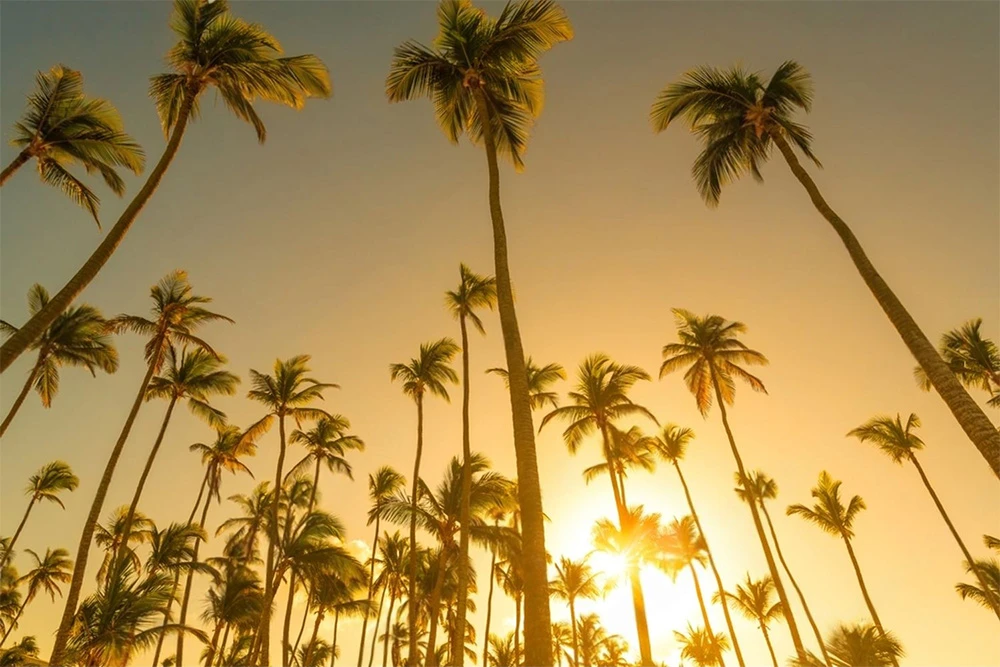
Yauya: Beneath the sand, freshwater still flows
I still remember learning the older name Yauya, the Land of the Freshwater and suddenly the coast made a different kind of sense. The Taíno chose a word that feels like a sip of cool water in the heat, a little knot of gratitude in the throat. It’s funny how knowing that shifts the horizon; the beach stops being only bright surface and starts to hint at depth.
Under Punta Cana’s pale limestone runs a quiet web of ancient rivers and cenotes, secret veins that still feed the turquoise pools at Ojos Indígenas Reserve. Stand near those lagoons and the air turns cooler, the smell of wet stone rises, and the light wavers across the surface. To me it feels like the land remembers its first language, and whispers it through water steady, generous, enduring.
Twelve lagoons, Taíno names, and the hush of guardians
I remember the air going cool and green, and the water holding its breath. Guama, Yauya those names felt like a roll call of old friends, syllables that softened the edges of the afternoon. The surface looked like glass, dragonflies stitching quick glimmers across it, and even the birds seemed to leave a little space for listening.
Locals say the lagoons are watched by spirits who bless respectful swimmers and trouble anyone who litters, and somehow that felt less like a warning than an invitation to show up with good manners. At the Ojos Indígenas Ecological Reserve in Punta Cana, you can feel it the quiet expectation, the gentle way the forest asks you to tread light. The scent of wet limestone, the prickle of shade on damp skin, the sense that you’re being noticed in a kind way, as if the guardians were patient aunties of the trees.
What surprised me most wasn’t the clarity of the water, but the clarity it drew out of people. The Taíno names lean on you, reminding you that beauty here isn’t a backdrop it’s a relationship. Step in with gratitude, step out lighter, and the place seems to nod back, as if to say: keep it clean, keep it sacred, and we’ll keep each other well.
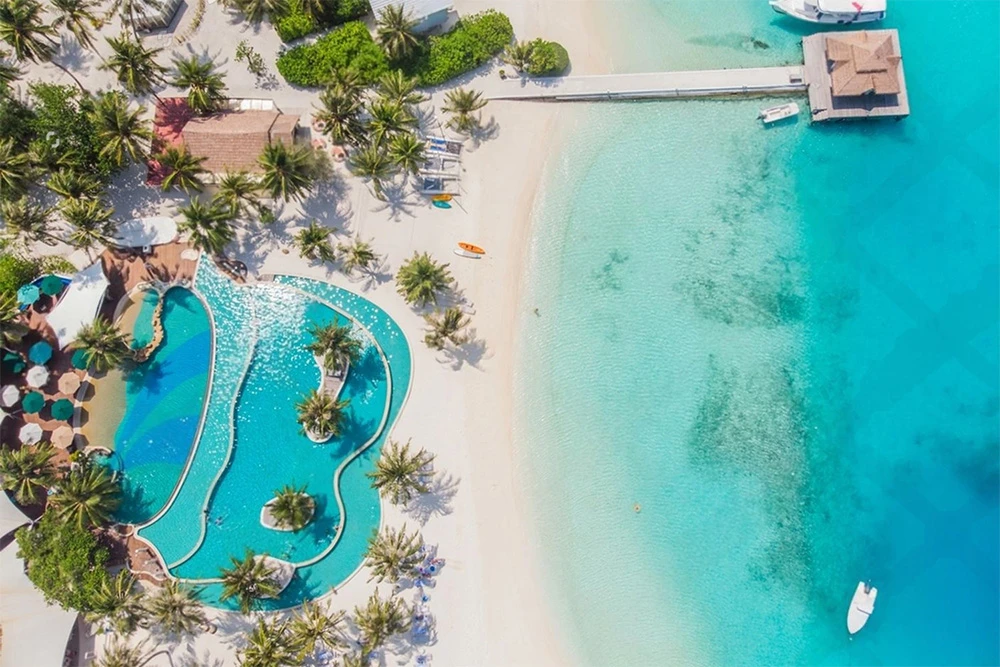
Blue flags along Punta Cana’s endless white sands
I remember the sand here squeaking underfoot, talc soft and bright, and that salt sweet breeze that makes your shoulders unclench. The coast seems to stretch like a long exhale, a pale ribbon meeting turquoise water so clear you can count your toes. It’s the kind of beauty that slows your thoughts without asking permission.
Then you notice the Blue Flags eleven of them along more than thirty miles blue squares pinned to the breeze like small medals. Here in Punta Cana, they mean the water is clean, the shore is cared for, and safety isn’t an afterthought. What I loved most was how locals look at them with a quiet satisfaction; each flag feels like a national badge, proof that the place they love is tended with respect.
It changes the mood of the day. You wade in and feel not just the cool lift of the sea, but also the comfort of a coastline looked after by its people. There’s a gentle pride in the air, like the hum of a familiar song, and it makes the whole shore feel even more welcoming beauty, yes, but also trust.
Volunteers farm coral along an 18-mile reef
I didn’t expect the ocean to feel like a nursery. Drifting over neat lines of baby coral trembling in the current, I watched light break into silver threads across the sand while the soft tick of bubbles kept time beside steady, gloved hands. It felt gentle down there, quiet work with a purpose.
Here, off Punta Cana, the reef runs for 18 miles, and in a region where coral is so often treated as ornament on shore, this one is being grown back piece by piece. Divers with patient fingers volunteer to transplant tiny fragments onto bare rock, and somehow that simple care changes the mood of the coast; it left me with a small, steady kind of hope, the sense that a place famous for play had chosen restoration too stitching color and life into the blue one fragment at a time.
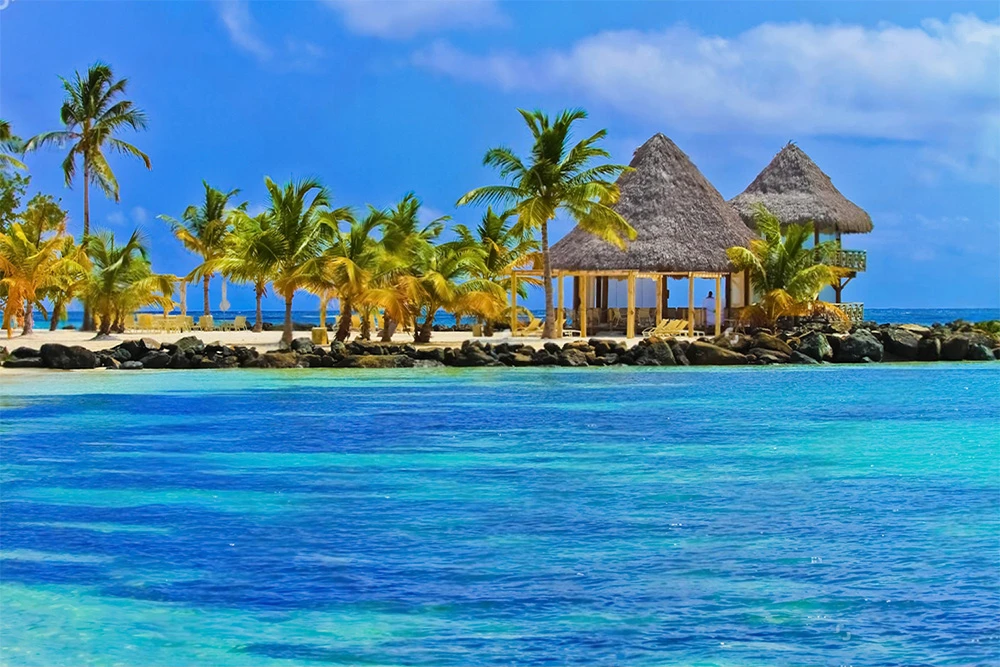
When the ocean hums with winter giants
Some winters the shore falls into a hush, like we’re all leaning in. From January to March, the humpbacks drift just offshore, and the water carries a low, patient note. On Maui, locals swear you can feel the ocean hum when they sing a bass line threading through sand and stone and I remember standing barefoot, the vibration rising through the beach into my chest, quiet and steady as breath.
It changes the scale of things. The gulls seem to soften, the wind feels heavier, and the day slows down to match that underwater rhythm. There’s this odd comfort in it, knowing a song that old is still moving beneath us, reminding you that the world keeps its own time and, for a few months, lets you hear it.
Paradise powered by sun and the sea
I didn’t expect the hush to feel so intentional. At sunset the paths glowed softly, and someone mentioned the lights were sun fed. I remember the air warm and salted, and the usual engine smell missing; instead there was only the lazy whisper of palms. It felt like the island had made a pact with the day, glass panels drinking light and handing it back after dark.
What surprised me most was the coolness. Some resorts draw chilled water from the sea and cycle it through the buildings, so the rooms breathe like shade, not machinery. In French Polynesia that kind of care feels true to the place luxury as a gentle footprint, not a heavy one. I slept easier knowing comfort could be clever rather than costly to the Earth.
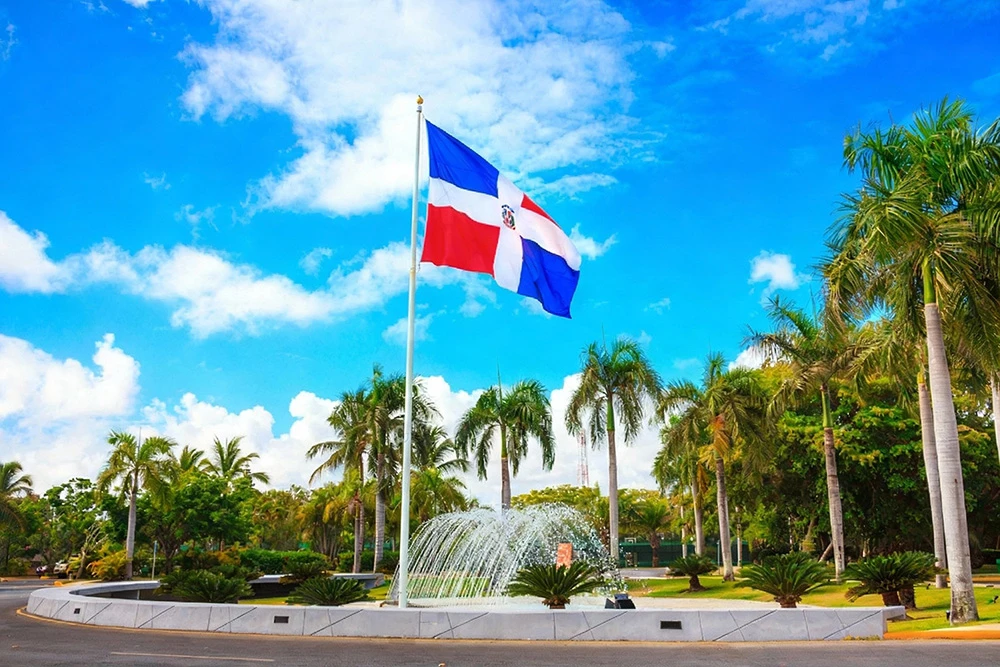
A bottomless blue whisper in Punta Cana
The first thing that gets you is the color an impossible blue that hushes you mid sentence. Just inland, the path slips into cool shade, and the cenote appears, clear and deep until the bottom becomes an idea instead of a place. I remember the air turning damp and mineral, a faint echo riding the limestone walls, the water so still it felt like the earth was holding its breath.
People say Hoyo Azul is a sacred gateway to the underworld; scientists say they’ve found prehistoric fossils folded into its depths. I love how both truths sit side by side here, like two stories told over the same fire one feeding imagination, the other steadying it. Standing there, I felt a tug of humility, as if time were brushing past my shoulder, and realized some places don’t ask to be solved, only respected.
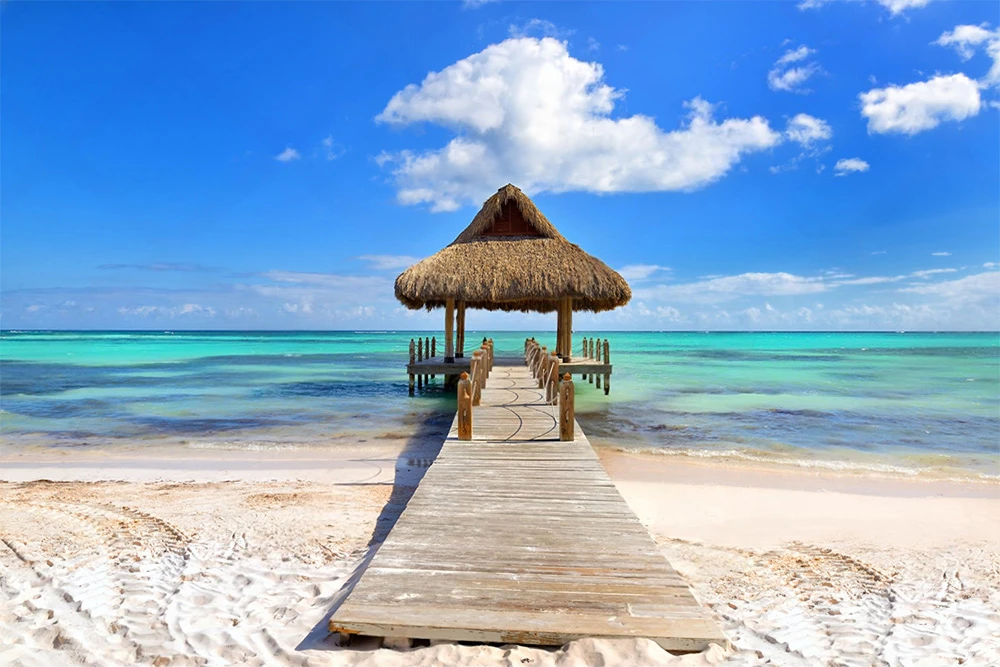
A shoreline that breathes without walls or playlists
The first thing you hear is the sea, not a speaker. Smoke rises from little grills where neighbors turn fish slick with lime and garlic, and the sand is still warm underfoot. As evening comes, surfers sketch soft cursive on the waves, and the beach hums kids laughing, aunties bargaining over a fillet, someone whistling off key, all of it easy and unscripted.
That’s the charm of Macao Beach: it feels unguarded, no resort walls to narrow the horizon, no predictable playlist to set the mood, just the ocean choosing the tempo and the locals sharing what they love. I remember the air tasting of salt and charcoal and a squeeze of lime, and how the whole scene made my shoulders drop. It’s the kind of place that teaches you joy can be simple: a sky fading into peach, a bite of fresh fish, and strangers turning into neighbors before the last light thins.
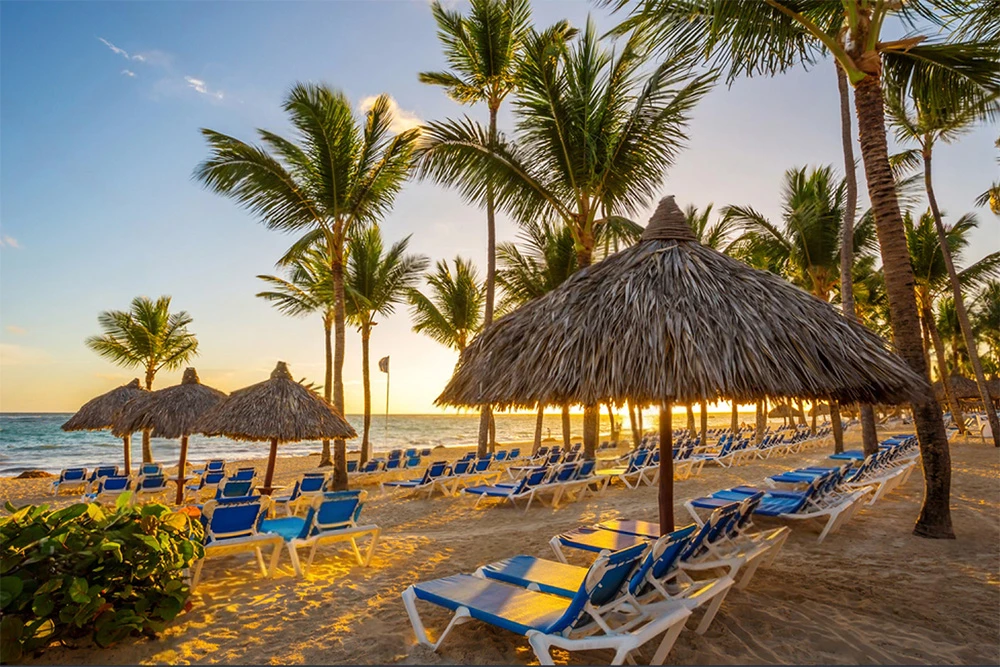
A secret beach behind a tropical trail
Some places teach you how to whisper. The air turns cool under palms, a path stitched with wet leaves and birdsong, and you can taste salt in the breeze long before the sea shows itself. It’s remote in the gentlest way, the kind of remoteness that slows your heartbeat until it matches the hush of the waves.
Most travelers never know it’s there; the few who do tend to keep it close, not to hoard it, but to protect its quiet. They call it Playa Escondida, a secret folded into the coastline pale sand curled between rocks, water so clear the sky shows on the surface. I remember feeling softer there, as if the day asked for nothing but to sit with it, and that felt beautiful enough to keep unannounced.
https://en.wikipedia.org/wiki/Punta_Cana
Cocoa, the island’s quiet second star after rum
I still smile at the surprise: here, cocoa is the humble runner-up export, pacing just behind rum. The air around it smells like roasted earth after rain, warm and a little nutty, the kind of scent that makes you slow down and breathe deeper. It feels right somehow, like the island wearing a secret perfume you only notice when you lean in.
At the Chocomuseo in Punta Cana, I learned that 500 years of cacao trade can fit into the palm of your hand. You grind, and the nibs turn to a grainy paste, and suddenly the room fills with stories sails and seasons, farmers and families like opening a warm library made of cacao. I remember the sound, a soft, steady scrape, and thinking how patience tastes: first bitter, then velvet, then sweet.
What stayed with me wasn’t just the chocolate; it was the sense of a place that trusts slow magic. Cocoa may not shout like rum, but it’s the heartbeat under the music, the quiet that lets the melody rise. You leave with your mouth sweet and your hands a little stained, carrying a small piece of history that melts at body temperature and lingers longer in memory.
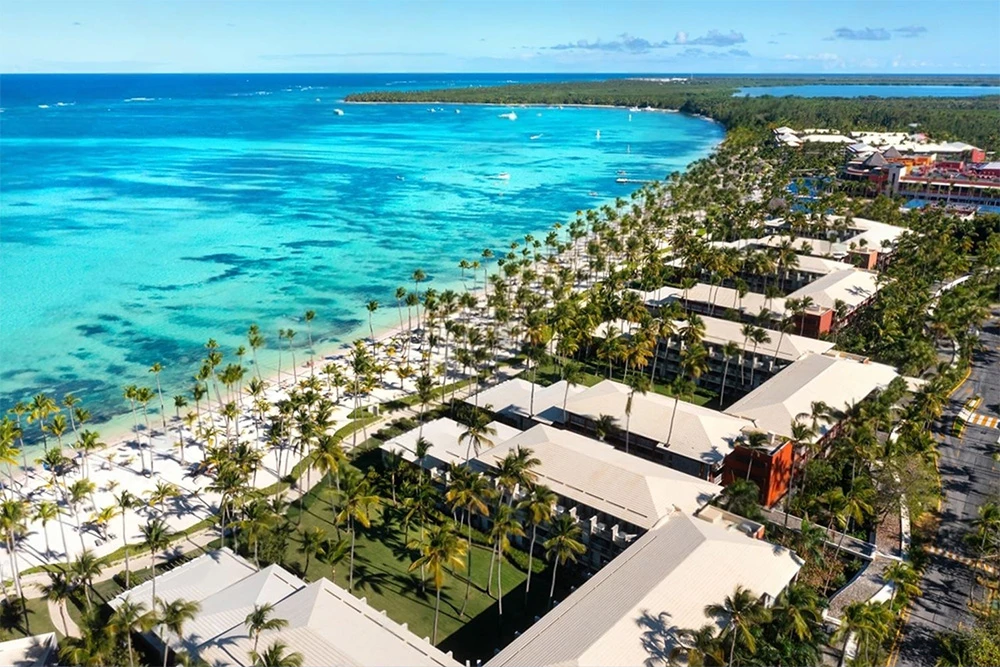
A concrete flame rises, midcentury faith in the Caribbean
I didn’t expect concrete to feel tender, but it does there. Barely an hour from the coast, the Basilica Catedral de Higüey lifts in a single, sweeping arc, like a match struck against the sky. Designed in the 1950s, it looks fearless and new even now so different from the pastel, colonial daydreams most people picture when they think of churches by the sea. I remember just standing quiet, surprised by how modern courage can look so serene.
Inside, the air is cool and smells faintly of wax and wet stone, as if the building has been gathering calm for decades. Colored light spills across the floor in slow, moving patches, and you feel the hush settle on your shoulders. It’s a bold thing, to put faith in concrete and let it reach upward without apology; there’s a humility in that honesty, and a hopefulness too. I walked out thinking the Caribbean doesn’t only keep its past it keeps reinventing its prayers, and sometimes they rise in gray, gleaming arcs that make your chest feel a little wider.

Barefoot devotion to Altagracia in Higüey on January 21
What surprised me most was how quiet joy can be. Every January 21, the air carries a low hum of prayers and the warm sweetness of wax candles for Nuestra Señora de la Altagracia, the country’s spiritual protector. It’s the locals’ favorite day, not because of fireworks or parades, but because you can feel love taking up space gentle, steady, unshowy.
In Higüey, pilgrims drift in from every direction, a tide of bare feet dusted in sun, grandmothers and teenagers, laughter and tears stitched into the same soft murmur. I remember the hush that settles over you when you realize devotion can be this tender; it’s as if faith is stitched into the air like a steady thread. The beauty of it is simple and fierce at once: a whole country choosing humility, stepping lightly together, and trusting that protection can be both intimate and vast.

Sancocho, where Spanish, Taíno, and African roots simmer together
That first spoonful felt like a family story I didn’t know I belonged to. Steam rose with cilantro and garlic, plantain sweetness nudging pumpkin and yuca, a gentle kick of pepper warming tender meats. It’s slow simmered on purpose, the national comfort dish that makes everything feel okay.
In Punta Cana, you taste the island’s mestizo heritage in each bite Spanish touches, African spice, and Taíno roots sharing the same pot without competing. I remember how it made us quiet and happy, at ease in that familiar warmth. It felt like a braid of histories you can hold in a spoon, simple and generous. Many influences, one comforting bowl.
A cocktail stirred by the same island sun
Funny how a sip can carry a whole place. The cane syrup doesn’t rush; it settles in with a mellow, molasses hush, and suddenly the air feels warmer, the evening slower. I remember thinking the sweetness wasn’t just sweet – it felt patient, as if the day itself had been cooked down to a glossy shine.
Somewhere in La Altagracia, someone still cuts tall cane by hand, under the very sun that bronzes the beaches and dries the towels. Knowing that makes the drink kinder, somehow – labor and leisure sharing the same light. It’s a reminder that flavor isn’t luck; it’s hands, heat, and time, all woven into one golden thread between the fields and the shore.

Perico Ripiao, merengue’s wild, rural heartbeat revealed
I thought I knew merengue until the drums cracked the salt heavy air and the accordion cut in, sharp as sea wind. The beat sprinted ahead: Perico Ripiao, fast and unbridled. The güira scraped like rain on a tin roof, and the tambora answered in bright bursts that made conversation impossible and grinning unavoidable.
Across the Dominican Republic, it’s the rural pulse that wandered into beach bars and never left, carrying a hint of dusty yards and the bite of limes. I remember realizing that music here feels less like a show and more like being welcomed to the table. Feet moved before thought, chest light and quick like a hummingbird heartbeat, and suddenly the night made sense the kind of joy that doesn’t ask permission, it just rises and carries you along.

A quiet laguna behind the resorts
I love how some mornings begin with quiet instead of clatter. Laguna Bavaro hides just beyond the resort buzz, its water pale and still, a thin mist unrolling over the reeds. At dawn, flamingos slip in to feed, their pinks quiet and soft, and the only sounds are gentle sips and the rustle of grasses.
Almost no one wanders here because it’s a protected ecological reserve, which feels right like a secret pocket sewn into a bright vacation dress. I remember standing there with the sun coming up and thinking how rare it is to find a place that lets you lean into the silence, unhurried and unperformed.
It surprised me how the whole coast felt different afterward, as if the day had a hush between heartbeats. In a world built for music and margaritas, this quiet corner reminds you what draws you to travel in the first place: the soft, improbable beauty that doesn’t ask to be noticed and stays with you anyway.
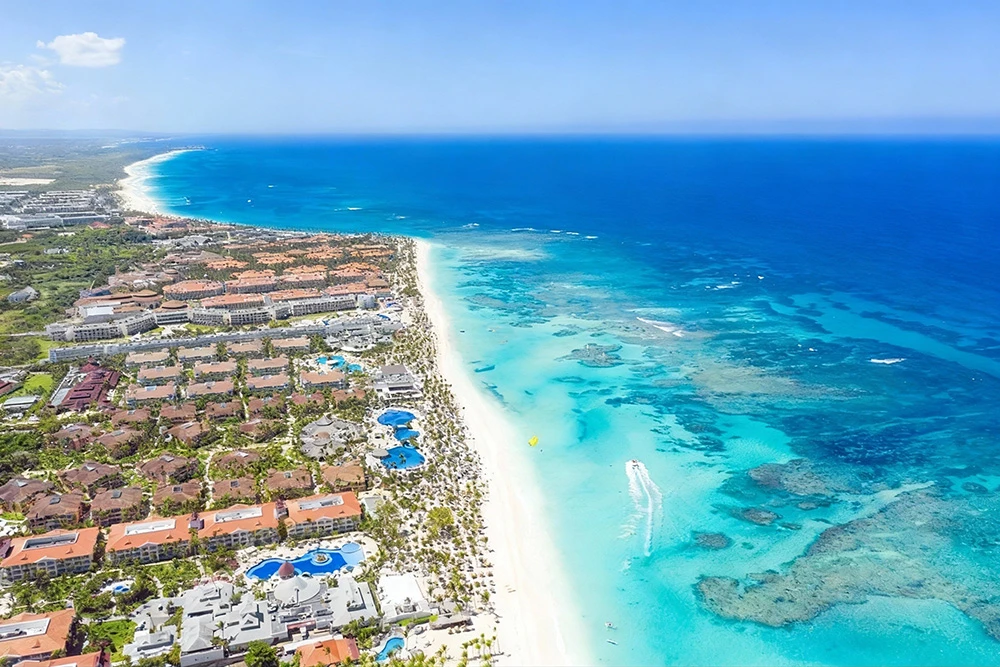
Moonlit swims promise love, new moons whisper caution
I swear the sea softens when the moon is out; in that pale glow, the waves fall into a gentle hush. Dominicans say a moonlit swim can tilt luck toward love, and on certain nights in Punta Cana it actually feels true. The moon throws a silver scarf across the water, the air tastes like warm salt and sugar, and the world seems tender enough to believe in small blessings.
But when the moon disappears, the elders hush the shoreline with a warning: the new moon stirs the island’s restless spirits, and the sea wants its own company. It sounds superstitious until you feel how the night changes how the breeze loses its sweetness and the beach grows very still. Maybe it’s their way of teaching patience, of saying that love and luck arrive best when you meet them halfway.
I remember liking the balance of it all: celebrate the bright nights, step back from the blank ones, let the island set the tempo. In a place so full of rhythm and heart, trusting the moon feels like trusting the tide that knows your name.
Mamajuana, the island’s warm, playful, all purpose cure.
My first sip felt like a pocket sized bonfire sweet at the edges, earthy underneath. There’s rum in there, of course, and red wine, and honey, all breathed through bits of tree bark that have been steeping for weeks, as if time itself were an ingredient. People grin when they pour it and toss out the old line about “Dominican Viagra,” but the joke is just the doorbell; the house is bigger and kinder than that.
I remember a night in Santo Domingo when someone handed me a glass and said it helps with colds, with heartbreak, with shyness whatever needs softening. And somehow, you believe them. It’s not about magic so much as the comfort of a remedy stitched together from forest and festival, a reminder that the body and the heart sometimes need the same warm thing. One swallow and conversation loosens, shoulders drop, and the world feels briefly mended, like you’ve been welcomed into a tradition that cures by gathering people closer.
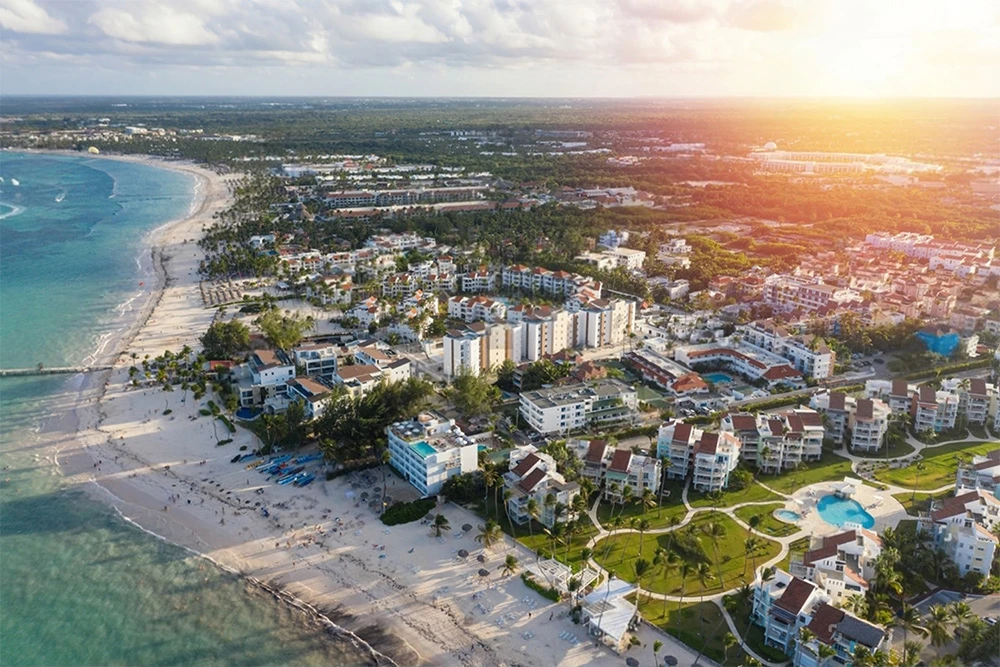
When mangoes become the money of summer
I didn’t expect the air to smell more like ripe fruit than sunscreen. Then I saw crates of mangoes small suns stacked in wooden boxes rolling down dusty lanes, the day’s quiet currency. In Punta Cana, where the sea is always posing for a postcard, people settle summer’s needs with sweetness, and it feels both surprising and exactly right.
Every year when the trees get heavy, the whole place shifts into a gentle barter: a crate for a repair, a few dozen for a favor, another for a week’s worth of eggs. No receipts, just nods and sticky hands, the kind of trust that blooms in heat. The breeze carries that syrupy perfume past tin roofs and roadside stands, and the economy hums like cicadas steady, soft, and understood without words.
I remember thinking how tender it is to live where abundance becomes the ledger. It says something about a community when value can be measured by the weight of sweetness, not the weight of coins. In a destination famous for beaches, the real wealth might be the mango stain on your shirt and the simple knowing that there’s enough to share.
Where a Caribbean classroom grows herbs, hope, and math
I still smile at the taste of sun warm guava and the clean, green smell of crushed basil. A kid pressed the fruit into my hand and giggled, chalk dust drifting through the light. Only later did it sink in: on this Caribbean island, I was standing in the first eco school in the region, and it didn’t feel experimental at all it felt like common sense wrapped in sunshine.
Here, sustainability shares a desk with algebra and the drumbeat of music class. Tiny herb beds line the walkway; plastic becomes bright mosaics and planters; the recycling bins whisper when the breeze moves through. The whole place feels like a small lighthouse for the future steady, bright, and kind. I left thinking how normal it seemed to them to grow their own tea, sing about rainwater, and greet strangers with fruit: a generation of planet‑friendly dreamers making hope feel practical.
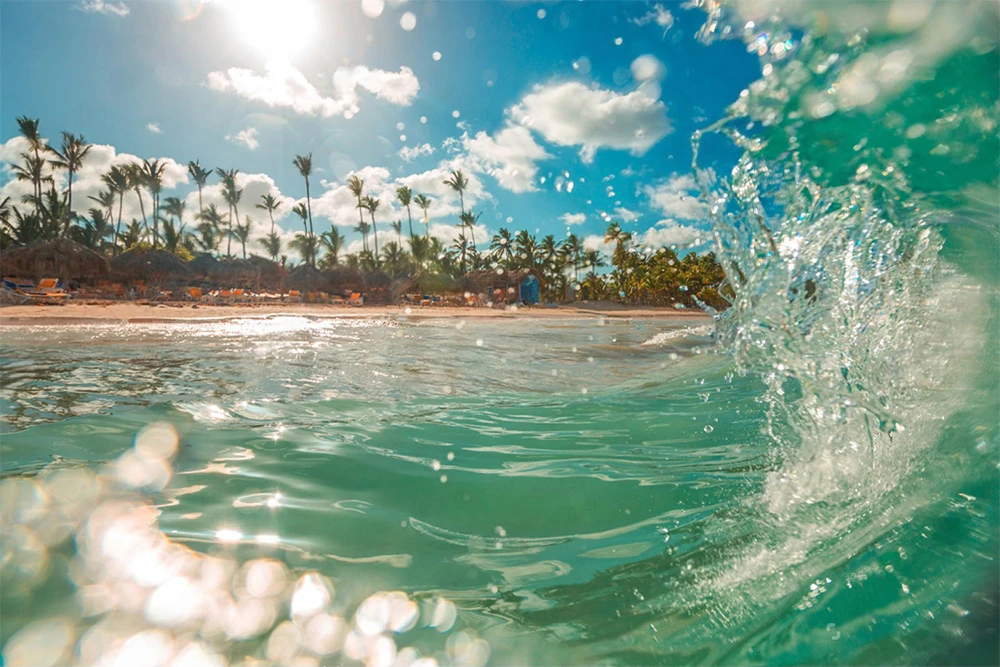
Swear Less, Smile More on Dominican Shores
I remember a beach volleyball match where a sunburned traveler let a spicy word fly as the ball skidded past him, and the whole circle of strangers burst into laughter. Someone wagged a finger, someone else waved it off with a soft “tranquilo,” and the game drifted on with the thump of the ball and the hush of waves. Only later did I learn there’s actually a law here about not cursing in public technically, a fine waiting in the wings yet the air still tastes like salt and mercy.
What got me was how it all makes sense: respect is the rule, ease is the culture. The law feels like a polite sign by the shore, but the island moves to a hammock sway rhythm that forgives little slips of the tongue. In Cabarete, you hear it in the relaxed laughter, the way people let the moment exhale. It’s a reminder that even rules can be wrapped in kindness, and that the softest word on a hot afternoon might simply be tranquilo.
From ranchland to resorts and dawn long parrandas
It still makes me smile how glossy resorts can grow from country bones. You walk past manicured palms and think of the old cattle fences that once lined this coast, as if hoofbeats were tucked beneath the lobby tiles. There’s a tenderness in that contrast salt air softening a place that learned patience from fields and weather, a quiet reminder that comfort is often planted in work worn soil.
Then Christmas arrives and the past stands up to sing. Whole hogs turn slowly over coals, skin crackling like a drumroll, and the night fills with orange peel, garlic, and smoke. Someone says it’s La Parranda, and before you know it, neighbors are moving from house to house till dawn, music spilling into courtyards, stories passed like warm plates. I remember thinking, in Puerto Rico, that this is how a place keeps its heart by letting the party roam, by feeding everyone, by stitching the night together with laughter so the old ranchland never quite goes quiet.
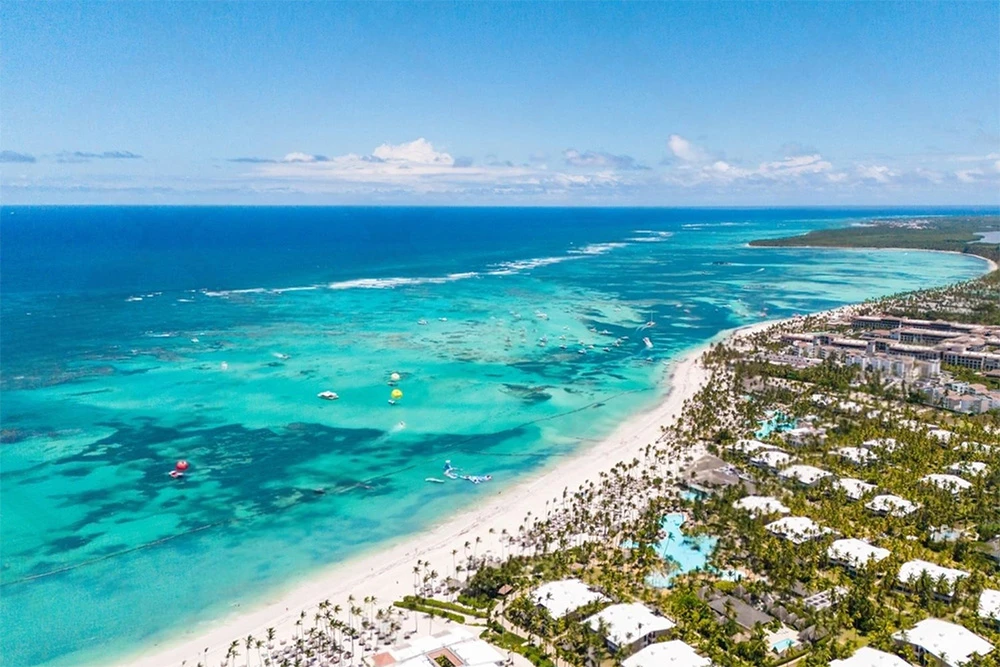
Cana Dogs, sun blessed mascots of beach days
There’s a lazy kind of happiness that naps under the palms here, and the dogs seem to keep time with it. They stretch out on warm sand with salt dusted noses, tails giving that soft, approving thump you feel more than hear, as if the beach hired them to keep the mood easy. I remember how the afternoon light turned buttery and they arranged themselves in the shade like old friends who know the routine.
Locals call them Cana Dogs streetwise, gentle, and somehow part of the scenery and the soul. In Punta Cana, they’re treated like neighbors, wandering from café to shoreline with an easy confidence, looking up with eyes that say, “You belong here, too.” They seem to know they’re adored, settling just so when the breeze shifts and the day exhale deepens, and the whole place softens like someone put on a familiar song.
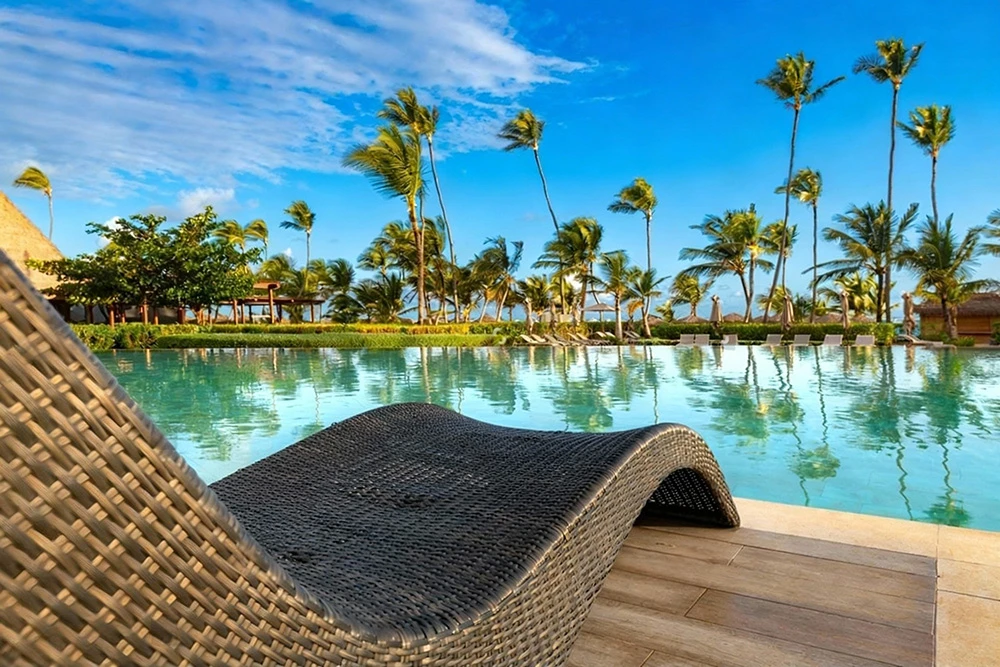
A paradise barely older than its airport
Sometimes the breeze makes it feel ancient salt on the lips, palm fronds whispering like they’ve always known our names and then I remember how new it really is. I love that feeling, the way luxury tries to pretend it’s timeless while the place underneath is still catching its breath.
Not so long ago, this was swamp and scrub. The first paved road only arrived in the late 1970s, and the airport didn’t lift its gates until 1984; in under fifty years, wetlands turned into a postcard the whole world keeps sending to itself. It’s like a seed that shot up overnight, somehow already throwing shade and fruit.
Maybe that’s why everything here feels a little bright eyed the music with its eager beat, the warm, unhurried smiles, the sunsets that look proud of themselves. It isn’t burdened by centuries; it feels like a promise. That fresh, made just yesterday feeling is the quiet heartbeat of Punta Cana.
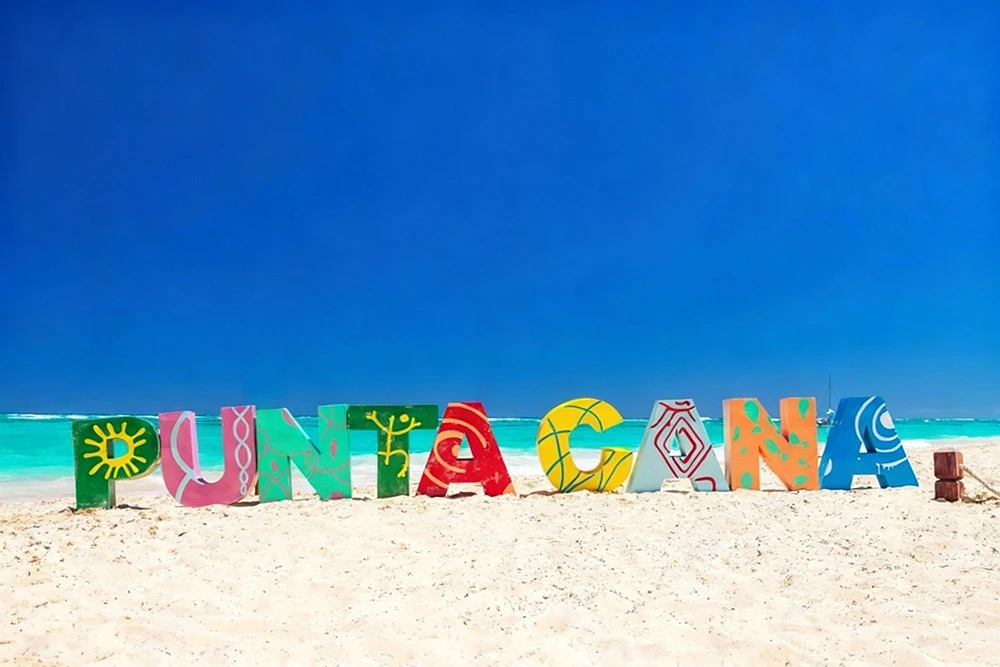
A quarter of a nation, from one shoreline
It still makes me blink: nearly 25% of the Dominican Republic’s economy coming from this stretch of sand. Even friends who grew up here tilt their heads and laugh, a little surprised, as the salt sweet breeze drifts through and ice clinks in plastic cups. The number feels too big for a place that smells like sunscreen and ripe mango, where afternoons slow down to the rhythm of gulls and merengue floating from a beach bar.
Here in Punta Cana, tourism isn’t just vacations; it’s rent paid, school uniforms bought, a reason morning buses fill and kitchens simmer by dusk. I remember standing under palms and sensing how joy itself becomes useful here, how a quiet engine hums behind the fronds powered by sunshine, yes, but also by the hospitality that seems woven into every hello. It’s surprising only until you notice the way smiles turn into livelihoods, and then it feels beautiful, like a shoreline holding up more than waves.
Ancient prayers resting in the turquoise hush
I didn’t expect silence to feel so alive. Off the shoreline by the Indigenous Eyes Reserve, divers talk about carved stone faces sleeping in pale sand Taíno idols softened by currents and time. Archaeologists think they were offerings, prayers given to sacred water, and it makes the sea feel like a quiet chapel where the island’s first words to the divine drift between light and silt.
I remember the breeze smelling of salt and mangrove, the surface rippling in layered blues and greens, and that quiet certainty that some places are built for reverence. The idea moves me: faith sturdy enough to be carved in stone, tender enough to be handed back to the water. In Punta Cana, even the calm seems to listen; it’s as if the shoreline keeps a gentle archive, letting history breathe underwater until someone is ready to hear it.
Doze to waves, wake knowing your next adventure.
Funny how a nap can feel like a turning point. Under a palm, the shade is warm but forgiving, fronds ticking softly, and the air tastes a little of salt and sunscreen. People there swear the surf keeps time with your breathing until something inside loosens, and honestly, it’s hard to argue with the way the day grows quiet around you.
I drifted off there once and woke with a calm sentence I hadn’t known I was waiting for buy the ticket, go inland, follow the music. Not a lightning bolt, more like sand settling in a glass until the water clears. In Punta Cana, no one acts surprised; they just smile, as if clarity is what the ocean keeps tucked under its sleeve.
Maybe it’s the rhythm, or simply the permission to pause long enough to hear yourself again a soft compass turning inside you. Whatever it is, the island seems to return your questions with gentle answers, and they arrive so naturally that you trust them without needing to explain why.
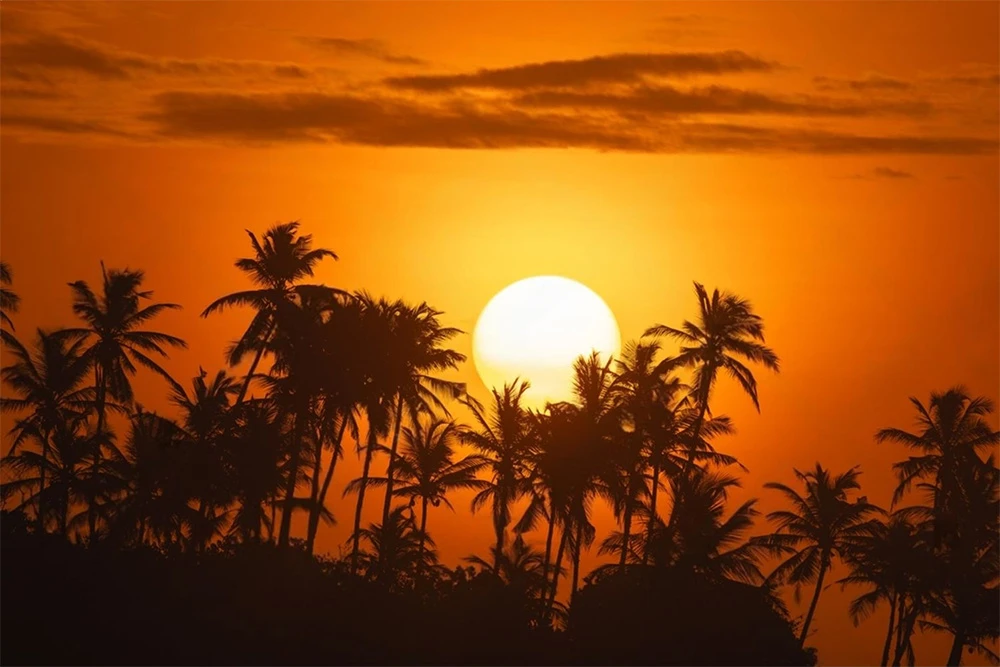
Final thought
In the hidden stories, small details, and human moments, Punta Cana comes into view with a truth that steady looking can find. Such glimpses invite us to slow down, to notice what we once rushed past, to let meaning come from the everyday. Let them gather and hold fast, joined like a gentle seam, and keep you open to what comes next. Step onward with curiosity awake and purpose light, inspired.


